All about repairing a stapler
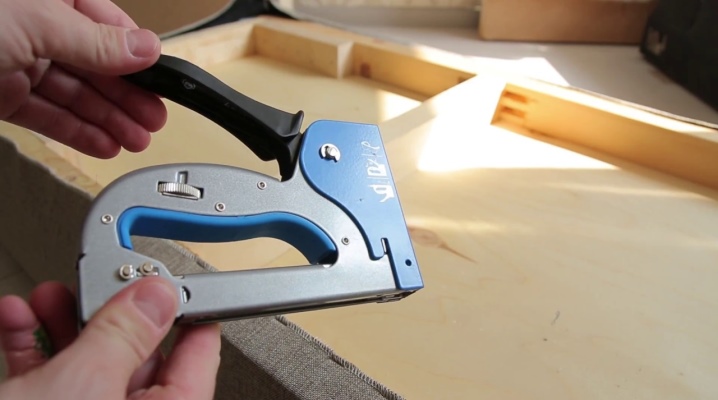
Repairing a stapler used at home for solving various problems always begins with finding the reasons for the breakdown. To carry out diagnostics and troubleshooting, to understand why the furniture tool does not fully hammer the staples, it helps to follow the instructions exactly. A detailed story about how to fix a pistol with your own hands, if it does not fire, will allow you to understand all the intricacies of the repair work.

Construction device
A furniture or construction stapler, also called a pistol or strobe gun, is a simple spring device, with the help of which the staples are docked with the material. The impact is carried out manually by pressing the lever. When a force is applied to it, the spring activates the mechanism. The staple is subjected to impact, enters the material, fixing in it.
All staplers have the following elements in their design:
- a handle with a movable stroke;
- adjusting screw for applying force to the spring;
- platoon leader;
- transport handle;
- drummer;
- shock absorber.

The body of the product is made of metal or its combination with plastic. In addition, there are several springs inside at once - a cylindrical combat, returnable, fixing the magazine, and one more for tensioning the cocking device. The adjustment screw is usually in a vertical plane with respect to the surface. In more rare cases, an option is used in which it is located under the handle.
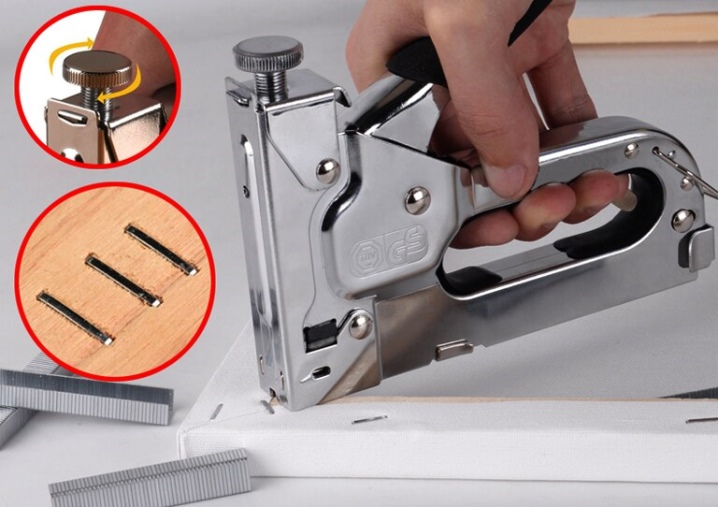
What if the stapler does not fully drive the staples?
The most common problem in using a stapler is incomplete insertion of the staple into the material. The problem is usually caused by incorrect spring tension adjustment. In this case, it will not take much time to fix the instrument with your own hands. Noticing that the stapler does not finish off the staples being used, you need to stop work, and then adjust the screw that is responsible for spring tension.

By increasing the tension, you can increase the force of impact. Consequently, a stapler that does not pierce materials well will perform better. The adjusting screw, depending on the type of construction of the tool, is located in front of the handle or below it. It can become loose during operation by loosening the tension.
Sometimes the problem of poor entry of staples into the material has more prosaic explanations that are not related to adjustment. The spring may stretch or break. In this case, you will have to replace it.

How to repair in other cases?
Many cases of stapler breakage are fairly common. Most often they are associated with the compartment in which the staples are located. If a spring has flown out in it or the outlet is clogged, you will not have to wait for regular work from the tool. The most common causes of breakdowns, their signs and remedies should be considered in more detail.

If the staples don't fire
The most obvious reason is the lack of staples in the gun store. You need to check the compartment - you may have run out of consumables. Also, sometimes the cause of problems is a mismatch in dimensional parameters. If the consumables do not fit a specific model or they were installed incorrectly, you will have to repeat all the necessary steps, correcting the errors.
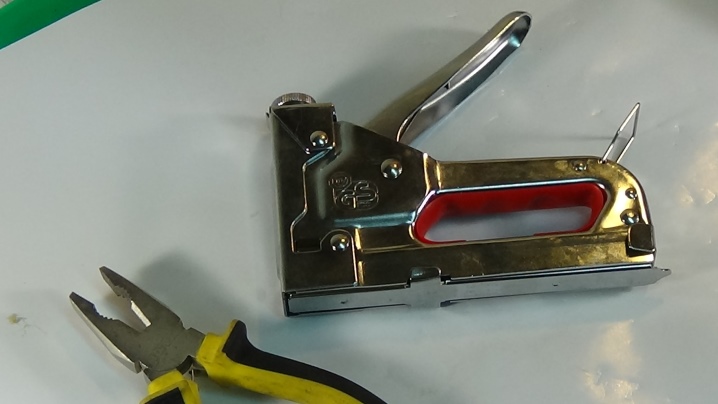
The furniture gun has many elements, malfunctions of which lead to equipment failure from normal operation. The staples will not fly out if the outlet is clogged. This happens when you select consumables that are too soft or the wrong size. The metal crumples under pressure, clogging the hole. The following staples simply cannot come out freely during feeding - it is necessary to stop, clear the formed "plug", and then continue working.

Also, when using the tool, you may encounter the following problems.
- Jamming of the sending mechanism. It is located in the staple compartment and should provide free movement inside the compartment. If there is insufficient lubrication, the pressure element gets stuck and the applied force is insufficient. You can solve the problem by using a drop of engine oil. You will first have to open the compartment with the staples, remove them, and then apply grease to the problem area.
- Flexing and creasing the consumable. In this case, the staples come out, but do not stick deep enough into the material. This is due to the too hard structure of the base. Replacing staples with more durable ones, as well as changing their length downward, helps to solve the problem. The short legs will be easier to fix in a solid base, while they will hold the material just as well.
- Doubling the elements. A serviceable stapler has a striker that is responsible for releasing staples. When it is deformed, its normal work is disrupted. The striker is flattened or slightly bent, it has to be changed or restored by impact. In this case, you will have to disassemble the entire tool.

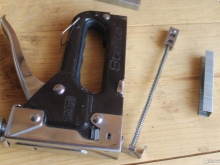

These are the main problems associated with a malfunctioning stapler. But there are other signs of malfunctions - not so obvious. They also deserve attention, because without finding a solution, it will be quite difficult to succeed in working with the tool.

Staples get stuck all the time
The situation in which there are several staples at once per one successfully fixed staple is quite common during prolonged use of the stapler. This is all due to the same wear or deformation of the striker. Even a small increase in the lumen leads to the fact that the staples will fall into it in more quantities or get stuck. At first, the frequency of the manifestation of the problem will not be too high, in the future the deformation will increase.
In this case, you can eliminate the malfunction even at home. To begin with, you will have to completely disassemble the stapler using a vice, a hammer and pliers, a screwdriver, a file.

The order of work will be as follows.
- Open the store with staples, extract the contents from it.
- Unscrew the adjusting screw. It should come completely out of the tool body.
- Pull out the adjusting spring through the hole.
- Disassemble the case. For this, a lock washer is removed from each pin. Then you can remove the fasteners from their sockets. Usually it is enough to remove only 2 pins, near the striker.
- Remove the impact mechanism from the housing. Examine the firing pin for damage. Particular attention should be paid to signs of deformation, deviations from the plane. A vise will help to straighten the bend or flattening of the striker; if irregularities and notches appear, file processing will be required.
- Collect the repaired tool. It is recommended to lubricate the impact mechanism with oil used in servicing sewing machines before installation. After that, you can place the staples in the store, test the tool in work. If the assembly is done correctly, there will be no problems.
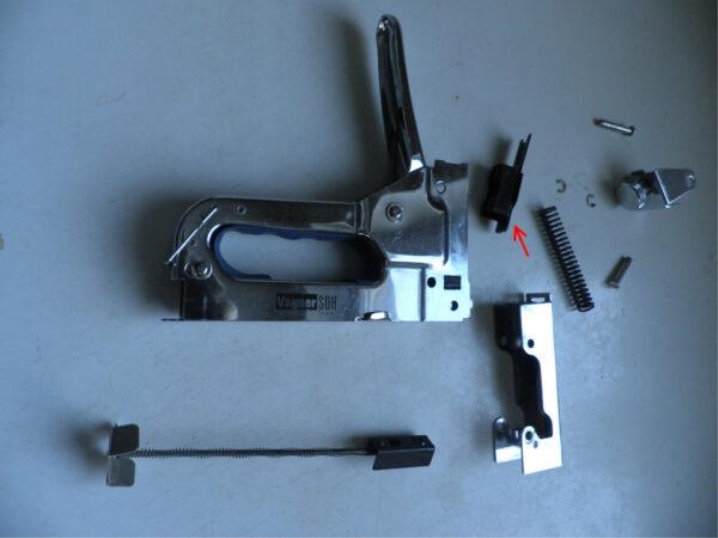
In case of more serious damage in the tool, the stop, with which the spring contacts when squeezed, can come off. In this case, we are talking about a complete replacement of the striking mechanism.Even by welding a broken part, it is impossible to guarantee that it will be able to withstand significant loads.
With a spring type of spring, the problem of jamming or doubling of the released brackets is solved in another way. In this case, it is necessary to make a U-shaped plate from metal. It is laid between the rammer and the fixing mechanism, excluding the free movement of the elements. The stapler will work more efficiently.


The staple shoots in the shape of the letter "M"
Sometimes the stapler will bend the staples down the middle, giving them an “M” look. In this case, the repair of the instrument itself is usually not required. The tool bends overly long staples, simply not providing a sufficiently tight fit for the striker upon impact. The problem is solved as easily as possible - by replacing the selected consumable. You need to take staples with shorter legs.

If the signs of creasing of the fasteners in the center persist, the tool will have to be disassembled. In this case, the firing pin is the most likely source of problems. When it is grinded, worn out, the contact density of the staple with the striker is lost. To correct the situation, processing the metal surface of the damaged part with a file with a fine-grained surface helps. It is important not to remove too much metal in order to avoid reducing the impact force.

Recommendations
Preventive measures help to avoid breakdowns in cases where the stapler remains unloaded for a long time. When sending the tool to storage, it is important to take care of the spring tension release. The adjusting screw is unscrewed to the maximum length. This prevents premature wear of the spring element.

After storage, you will need to further adjust the tool. The spring tension is adjusted until the staples are correctly inserted into the surface of the material. After a long downtime, the striker mechanism must first be lubricated. For these purposes, miniature oilers used in the maintenance of sewing equipment are well suited.


The lubrication procedure will be as follows.
- Unscrew the adjusting fasteners completely. Pour 1-2 drops of oil into the vacant hole.
- Reinstall the hardware. Screw it all the way in, make 2-3 “idle” clicks with an empty magazine.
- Open the block in which the staples are installed. Add grease to the slot in the impact mechanism. Repeat 3-4 clicks, distributing the oil inside the instrument. At this point, the stapler must be kept upside down to prevent splashing of lubricants.
- Install the brackets. Test the operation of the device.
It is worth considering that even with normal operation of the stapler, the lubrication procedure will have to be repeated at least once every 3 months. This will significantly reduce the wear of the parts, prevent their abrasion and rust formation.
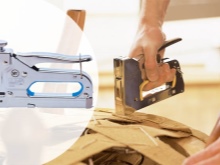
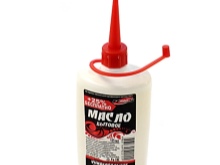

The following video will tell you what to do if the stapler does not clog the staples.













The comment was sent successfully.